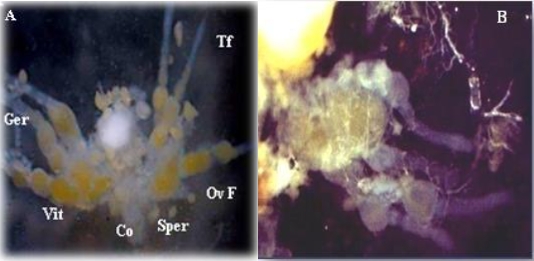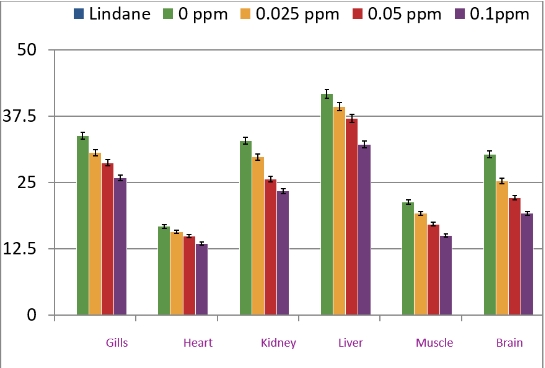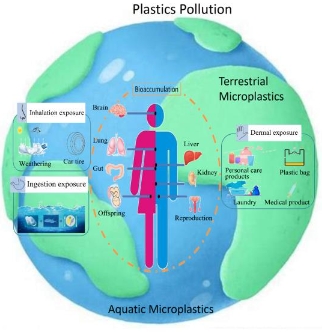Toxicological evaluation of Ultrapure and Potent Tannic Acid (UPPTA) by inhalation exposure
Abstract
The therapeutic options for coronal virus infections are limited. As SARS-CoV-2 directly targets the lungs and causes lung damage, treatment of COVID-19 with inhalants may offer more advantages over oral administration. Inhaled drug delivery provides a higher drug concentration in the target organ, where SARS-CoV-2 proliferates. In this study, we evaluated the potential systemic toxicity, relevant target organ toxicity, and toxicokinetics of Airnecflu®, Ultrapure, and Potent Tannic Acid (UPPTA) by metered-dose inhaler (MDI) inhalation to rodent and canine species once a day for 2 consecutive weeks. We further investigated the reversibility of the toxicity following a 3-week recovery period. No mortality related to the test article was observed in all the dose groups. Neither abnormalities related to the test article nor toxicologically significant changes were observed in both rodent and canine studies. In pathological examination, alveolar macrophage aggregation, perivascular/interstitial/alveolar inflammatory cell infiltration, and alveolar/bronchial epithelium hyperplasia were noted in the lung with bronchial involvement. However, after a 3-week recovery period, a substantial recovery was observed. There is limited systemic exposure to the inhalation administration. Therefore, inhalation of Airnecflu® UPPTA is safe to administer for respiratory disorders like COVID-19.
References
[1]Tian F, Li B, Ji B, et al. Identification and structure–activity relationship of gallotannins separated from Galla chinensis. Lebensmittel-Wissenschaft und-Technol 2009; 42: 1289–1295.
[2]Green RH. Inhibition of multiplication of influenza virus by tannic acid. Experimental Biology and Medicine 1948; 67(4): 483–484. doi: 10.3181/00379727-67-16347p
[3]Chen CN, Lin CPC, Huang KK, et al. Inhibition of SARS-CoV 3C-like protease activity by theaflavin-3,3’-digallate (TF3). Evidence-Based Complementary and Alternative Medicine 2005; 2(2): 209–215. doi: 10.1093/ecam/neh081
[4]Hoffmann M, Kleine-Weber H, Schroeder S, et al. SARS-CoV-2 cell entry depends on ACE2 and TMPRSS2 and is blocked by a clinically proven protease inhibitor. Cell 2020; 181(2): 271–280. doi: 10.1016/j.cell.2020.02.052
[5]Wang SC, Chen Y, Wang YC, et al. Tannic acid suppresses SARS-CoV-2 as a dual inhibitor of the viral main protease and the cellular TMPRSS2 protease. American Journal of Cancer Research 2020; 10(12): 4538–4546.
[6]Shih PC, Mao YW, Hu JW, et al. Development of ultrapure and potent tannic acids as a pan-coronal antiviral therapeutic. ACS Pharmacology & Translational Science 2022; 5(6): 400–412. doi: 10.1021/acsptsci.1c00264
[7]Wu V, Lu LP, Chang WH, et al. Pentarlandir® for the treatment of adult with early COVID-19: A randomized, double blind, placebo controlled, proof of principle study. Unpublished data.
[8]Rau JL. The inhalation of drugs: Advantages and problems. Respir Care 2005; 50(3): 367–382.
[9]Fatima S, Haider N, Alam A, et al. Preventive, promotive and curative aspects of dementia in complementary medicine (Unani): Through-Black Box Design. International Journal of Herbal Medicine 2017; 5(1): 1–5.
[10]Djakpo O, Yao W. Rhus chinensis and Galla Chinensis – folklore to modern evidence: Review. Phytotherapy Research 2010; 24(12): 1739–1747. doi: 10.1002/ptr.3215
[11]Daly JS, Cooney DO. Interference by tannic acid with the effectiveness of activated charcoal in “Universal Antidote.” Clinical Toxicology 1978; 12(5): 515–522. doi: 10.3109/15563657809150025
[12]Chokotho L, van Hasselt E. The use of tannins in the local treatment of burn wounds—A pilot study. Malawi Medical Journal 2005; 17: 19–20. doi: 10.4314/mmj. v17i1.10866
[13]Loeb H, Vandenplas Y, Würsch P, et al. Tannin-rich carob pod for the treatment of acute-onset diarrhea. Journal of Pediatric Gastroenterology and Nutrition 1989; 8(4): 480–485. doi: 10.1097/00005176-198905000-00010
[14]Chen H, Liu J, Cui K, et al. Molecular mechanisms of tannin accumulation in Rhus galls and genes involved in plant-insect interactions. Scientific Reports 2018; 8(1). doi: 10.1038/s41598-018-28153-y
[15]Ren Y, Zhang X, Li T, et al. Galla chinensis, a traditional Chinese medicine: Comprehensive review of botany, traditional uses, chemical composition, pharmacology and toxicology. Journal of Ethnopharmacology 2021; 278: 114247. doi: 10.1016/j.jep.2021.114247
[16]Lee C. Porcine epidemic diarrhea virus: An emerging and re-emerging epizootic swine virus. Virology Journal 2015; 12(1). doi: 10.1186/s12985-015-0421-2
[17]Jeong GU, Song H, Yoon GY, et al. Therapeutic strategies against COVID-19 and structural characterization of SARS-CoV-2: A review. Frontiers in Microbiology 2020; 11. doi: 10.3389/fmicb.2020.01723
[18]Yadav R, Chaudhary JK, Jain N, et al. Role of structural and non-structural proteins and therapeutic targets of SARS-CoV-2 for COVID-19. Cells 2021; 10(4): 821. doi: 10.3390/cells10040821
[19]Zhang L, Lin D, Sun X, et al. Crystal structure of SARS-CoV-2 main protease provides a basis for design of improved α-ketoamide inhibitors. Science 2020; 368(6489): 409–412. doi: 10.1126/science.abb3405
[20]Zhang Y, Gao H, Hu X, et al. Structure-based discovery and structural basis of a novel broad-spectrum natural product against the main protease of coronavirus. Journal of Virology 2022; 96(1). doi: 10.1128/jvi.01253-21
[21]Mao YW, Lu LP, Shih PC, et al. Ultrapure and potent tannic acid (UPPTA) is a novel inhibitor of D-amino acid oxidase to improve the N-methyl-D-aspartate function of CNS disorders. Phytomedicine Plus 2023; 3(1): 100399. doi: 10.1016/j.phyplu.2022.100399
[22]Janower ML, Robbins LL, Tomchik FS, et al. Tannic Acid and the Barium Enema. Radiology 1965; 85(5): 887–894. doi: 10.1148/85.5.887
Copyright (c) 2023 Lu-Ping Lu, Yi-Wen Mao, Theodore Tsai, Yi-An Lai, Teh-Ying Chou, Guochuan Emil Tsai

This work is licensed under a Creative Commons Attribution 4.0 International License.








